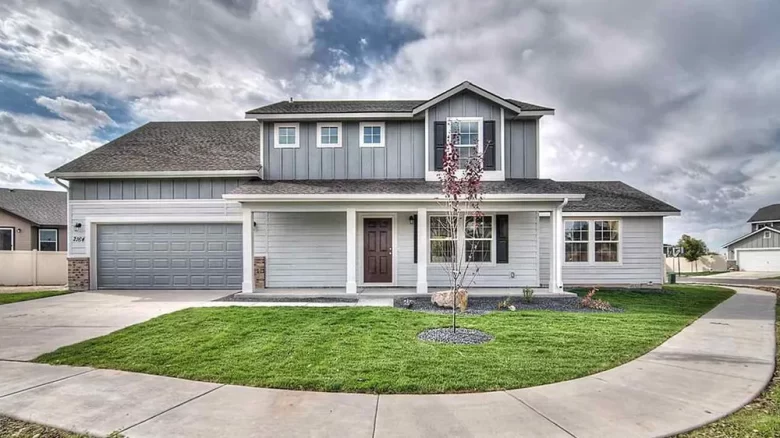Everyone wants to own their own home, but rising construction and real estate costs make this seem impossible for many. However, having affordable housing doesn’t just mean lowering prices. It also means using money-saving methods when building your home. This article discusses various methods and strategies that builders, architects, and homeowners can use to build affordable homes without sacrificing quality.
1. Make Design more Efficient:
Create a Simple Design
The style of the house has a huge impact on construction costs. By choosing a simple, clear design, you not only save money on materials but also on labour costs during the construction process. A streamlined design that makes optimal use of space keeps everything running smoothly while reducing costs.
Small Footprint
Of course, larger homes require more supplies and work. Using a small footprint not only reduces the overall footprint but also allows for better use of space. This approach can help you save money without giving up comfort or functionality.
Open Floor Plan
One of the reasons open-concept layouts are becoming more common is that they look modern and save money. Removing unnecessary walls can reduce the amount of material needed and make the construction process easier. It can also give the impression of a larger space, making a small house feel bigger.
2. Materials and Construction Methods:
Sustainable and Affordable Materials
It is important to choose something that is both affordable and durable. Some sustainable, eco-friendly, and inexpensive materials include engineered wood, recycled steel, and concrete. Additionally, exploring regional sources can reduce material transportation costs.
Prefabricated and Modular Buildings
In prefabricated and modular construction methods, components are assembled off-site and then brought to site for permanent assembly. This approach can significantly reduce construction time and labour costs. The factory’s controlled environment also helps to reduce waste and improve quality.
3D Printing Technology
Although 3D printing is still relatively new, it is already showing promise for building affordable housing. This method involves stacking materials on top of each other to create a three-dimensional building. Where standard building materials are expensive or difficult to find, 3D printing can be a very cost-effective option.
3. Solutions that Use Less Energy:
Passive Solar Design
Designing with passive solar energy principles in mind can help save money and energy in the long run. To do this, windows and thermal mass must be positioned so that natural light and heat are maximised. This means that less use is made of artificial lighting and heating systems.
Devices that Use Less Energy
Installing energy-efficient equipment in affordable homes may cost a little more initially, but it will save a lot of money in the long run. Energy-efficient appliances use less energy, which lowers your monthly bills and makes owning a home more affordable over time.
4. Government Incentives and Cooperation:
Affordable Housing Programmes
Governments often offer incentives and programmes to help people build affordable homes. Local governments can help builders and developers obtain handouts, subsidies and tax breaks that can significantly reduce the costs of construction projects.
Collaborating with the Government
Cooperation between the government and the business community can help solve the problem of rising housing costs. When governments, private developers and nonprofits work together, they can share resources and risks and make it easier to build low-cost housing.
5. Bringing People Together and Sharing Resources:
Community Land Trusts
Community land trusts are nonprofit organisations that purchase and own land for the good of the community. This plan keeps land ownership and home ownership separate. This makes houses more affordable, while people can still build up equity in their homes.
Facilities and Spaces that are Shared
When people in a community use shared services and spaces, they don’t have to build as many unnecessary structures in their own homes. Shared facilities such as community gardens, tool libraries and play areas not only bring people together but also help keep costs down.
6. Maintenance Costs and Long-Term Affordability:
Durable Materials and Low Maintenance
By investing in sustainable materials that do not require much maintenance, a house can remain affordable in the long term. Even though high-quality materials may cost more initially, they can save families money in the long run by requiring fewer repairs and replacements.
Education for Home Buyers
Teaching people how to provide proper home care can prevent problems from getting worse and costing a lot of money. By giving people the tools and simple skills they need to make repairs themselves, they can take action and keep their homes in good condition for longer.
Conclusion:
To create cheap houses, you have to think about many things, such as design, materials, construction methods, energy efficiency, teamwork and long-term sustainability. The construction industry can do a lot to meet the world’s need for affordable housing by using methods that save money.
As the world faces issues of population growth, urbanization and economic problems, it is essential to build homes that are not only cheap but also long-lasting and energy efficient. We can work towards a future where more people can achieve their goal of owning their own home by using new ideas, involving the community and getting help from the government. Building affordable homes in a way that saves money not only helps the people who live in them but also improves the health and safety of communities around the world.



